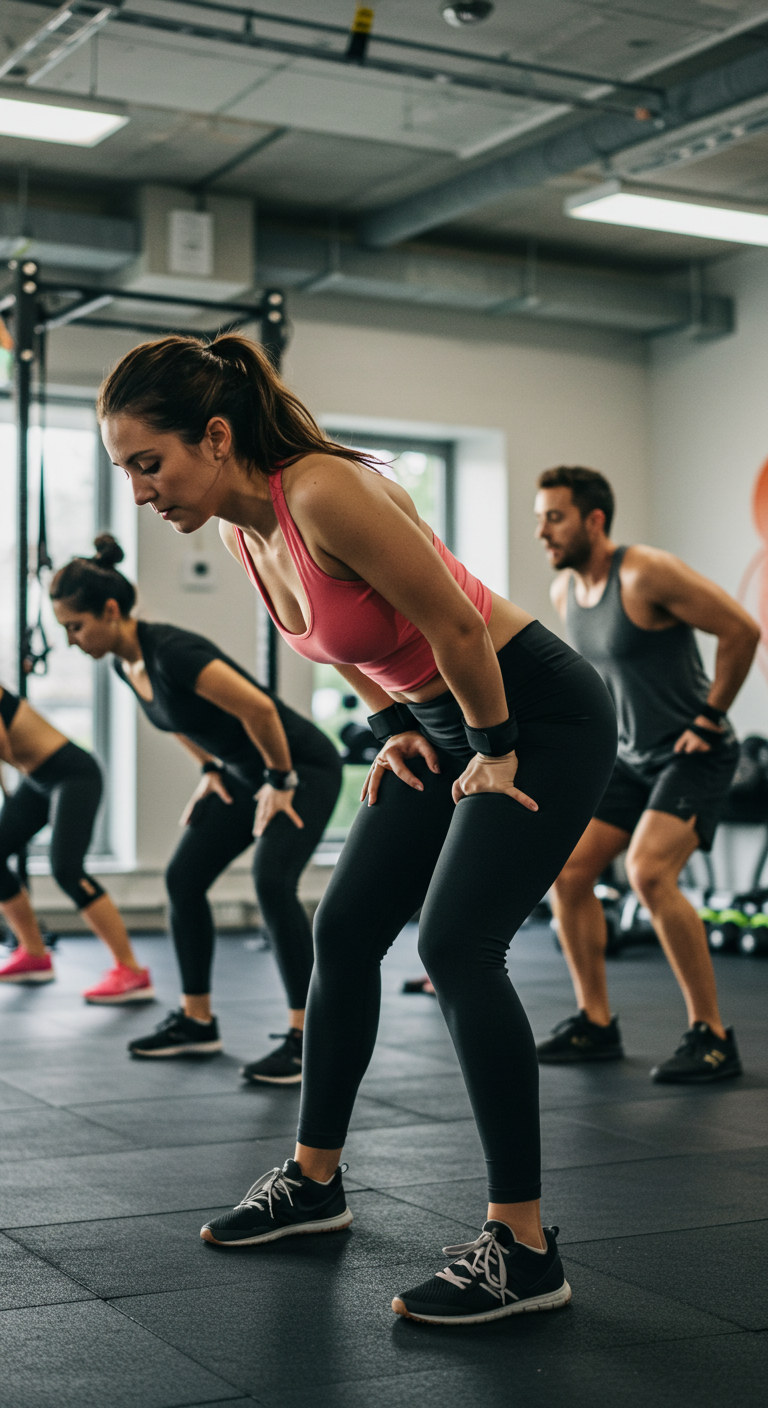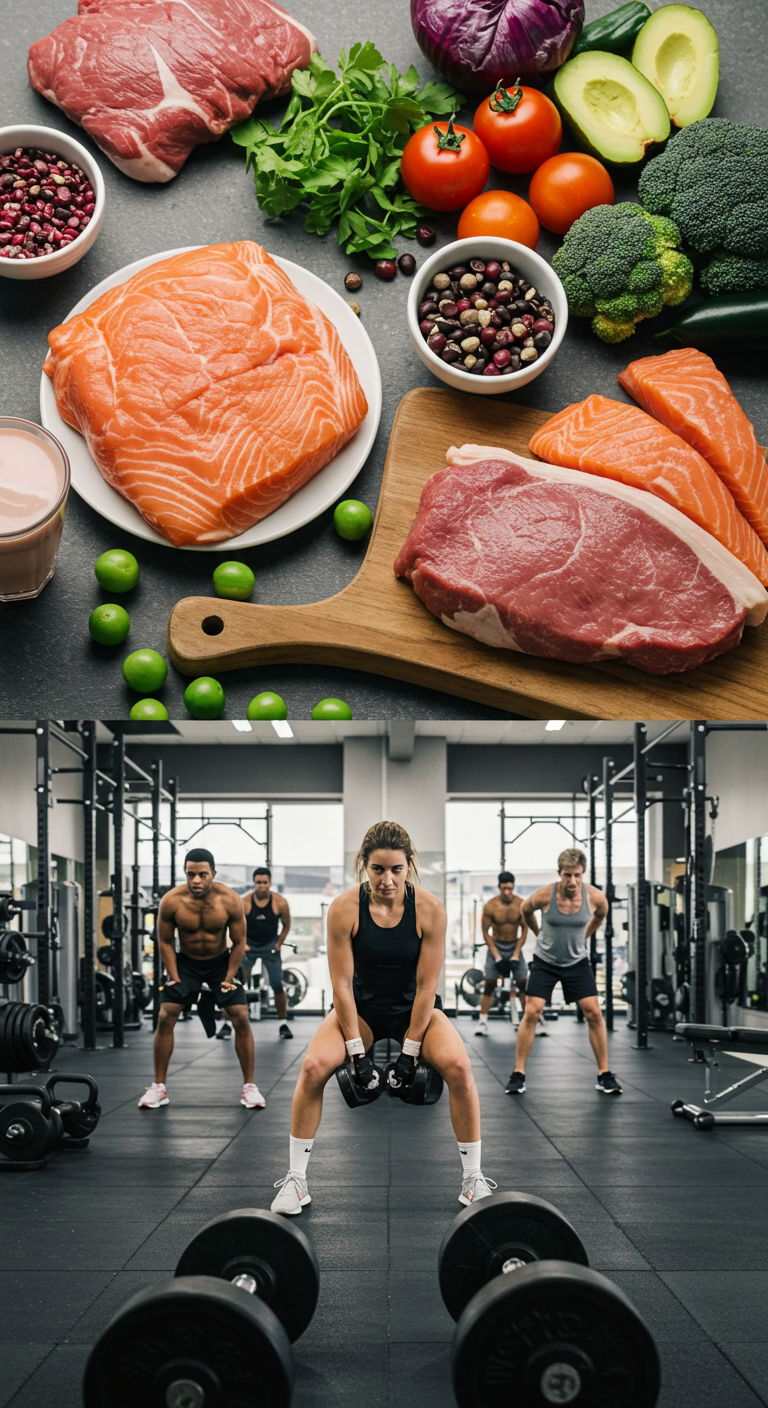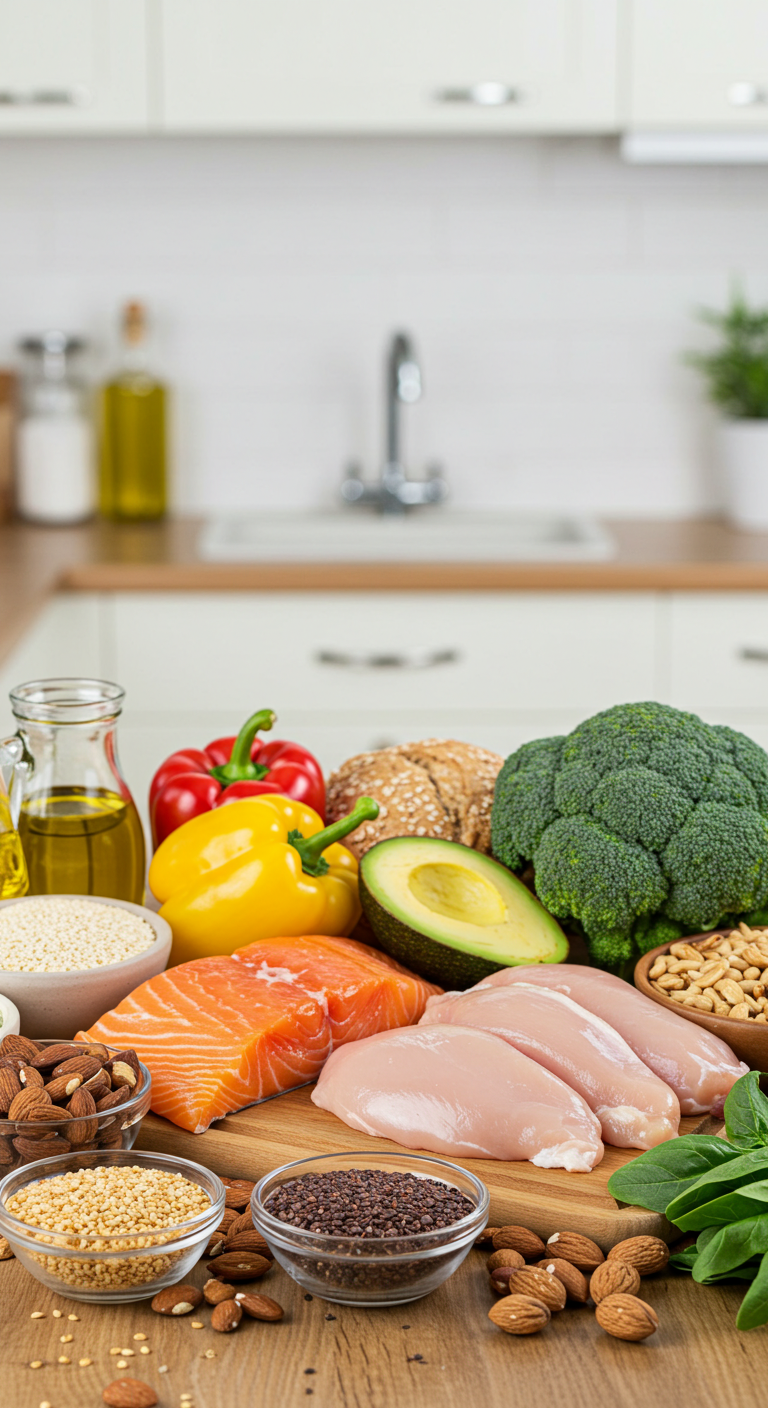Fat Loss and Muscle Loss Prevention
Did you know that during weight loss, you might lose 20-40% of your weight from muscle? It’s crucial not just to focus on losing fat but also to prevent muscle loss. Muscle loss prevention is key in the fight against obesity. Losing weight might mean losing muscle too. It’s important to keep your muscles as you lose weight.
Losing fat is great for your health and can help with obesity-related issues. But, saving your muscles is just as important. You can balance your diet, exercise, and nutrition to stop muscle loss. Together, they form a solid strategy to keep your muscles while you lose fat. For ways to do this right, read this helpful article.
The Importance of Fat Loss for Overall Health
Understanding the importance of fat loss goes beyond aesthetics. It plays a crucial role in improving overall health, particularly in tackling obesity. Obesity health risks are real and can involve serious conditions such as diabetes, cardiovascular diseases, and certain cancers.
Recognizing these risks not only emphasizes the need for weight management but also highlights how intertwined these factors are with daily life and metabolic function.
Understanding Obesity and Its Health Risks
Obesity is more than a number on a scale; it significantly alters the body’s mechanics and metabolism. The imbalance between excess body fat and decreased skeletal muscle can lead to a condition known as sarcopenic obesity. This condition has been shown to elevate mortality risks, particularly regarding muscle strength rather than mass itself.
Research indicates that low muscle mass impacts all-cause mortality risk, making the understanding of obesity health risks all the more urgent. Moreover, losses in skeletal muscle mass during weight loss can affect both quality and quantity of life, pushing the need for effective fat loss strategies to the forefront of muscle loss prevention.
Benefits of Weight Loss on Metabolic Risk Factors
The benefits of weight loss extend well beyond the juiciness of a few pounds lost. Even modest reductions in weight can trigger significant health improvements, including lower blood pressure, improved insulin sensitivity, and reduced triglyceride levels.
Notably, weight loss has the potential to lower cancer risk and enhance sleep quality, leading to a better mood and self-esteem. These changes positively influence metabolic risk factors, highlighting how achieving and maintaining a healthy weight is essential for long-term health and vitality.
How Diet-Induced Weight Loss Affects Muscle Mass
When we talk about losing weight through diet, it’s crucial to think about muscle mass. A lower calorie intake can lead to a loss of both fat and muscle. Research shows that muscle loss varies a lot depending on factors like gender. Knowing these differences helps plan out diets and exercises to keep muscle while losing fat.
Effects of Caloric Deficit on Lean Body Mass
Reducing calories, even by just 600 kcal, can cause weight loss. But, it also means you might lose some muscle. For people with obesity, about 20-30% of weight loss can be muscle. That’s less than the 35% seen in people with a normal weight. This shows why diets should be customized for muscle loss prevention.
- The average muscle loss is between 2-10% when you lose about 8-10% of body weight.
- Eating more protein while dieting can help save muscle, leading to less muscle loss versus fat.
- Adding resistance training and a high protein diet helps keep muscle while reducing fat.
Male vs. Female Muscle Loss Patterns During Weight Loss
Men and women lose muscle differently during weight loss. Men often lose more than women when they start to diet. This is because of hormonal differences and how much muscle they start with.
- Men might lose more muscle at the start of a diet.
- Women tend to keep more of their muscle, even with less food.
- It’s important to know these differences to make better diet plans for everyone.
Strategies for Effective Fat Loss
Starting your weight loss journey means finding the right balance. It’s essential to emphasize a safe calorie deficit to avoid losing too much muscle. There are many ways to lose fat that help you reach your goals. At the same time, they help keep your muscle strong.
Creating a Calorie Deficit Safely
To begin a safe calorie deficit, cut back on daily calories by 500 to 1,000. This leads to a steady slow weight loss of one to two pounds per week. Slow weight loss is better for keeping muscle, vital for your look and muscle health.
Make sure to eat enough protein, about 50-60 grams a day. This helps prevent muscle loss when you’re eating fewer calories.
Slow vs. Rapid Weight Loss: Implications for Muscle Health
The choice between slow weight loss and rapid weight loss matters a lot. Fast weight loss can mean losing up to 25% of your muscle. Slow weight loss is better for keeping muscle and for long-term health.
Adding resistance training improves muscle strength and endurance. This is key for a strong body during weight loss. Doing exercises like squats and deadlifts helps support your body’s muscle during this time.

Exercise: The Key to Muscle Retention During Weight Loss
Losing weight can raise fears of losing muscle too. Exercise plays a key role in successful weight management. Both resistance training and endurance workouts are important. They help keep a balance between losing fat and keeping muscle. Doing a variety of exercises gives the best results.
The Role of Resistance Training
Resistance training is a great way to keep muscle during weight loss. It boosts muscle protein making, fighting the usual muscle loss when eating less. Studies have found that doing resistance training while on a very low-calorie diet leads to less muscle loss. Eating 25 to 30 grams of protein per meal is vital. It gives your body what it needs to repair and grow muscle.
Incorporating Endurance Workouts for Optimal Results
Endurance workouts, like running or cycling, are good for burning fat. They work well with resistance training for weight loss. These activities also help with heart health and help create the calorie deficit needed to lose weight. Doing both resistance and endurance exercises can make older people fitter. It’s good to do endurance exercises two to three times a week. This helps with both losing fat and keeping muscle.

Muscle Loss Prevention Techniques
Keeping your muscles strong is key to staying healthy, especially as we get older or face health issues. It’s important to focus on good habits that prevent muscle loss. High protein intake and a balanced mix of macronutrients are crucial for this goal.
High Protein Intake and Its Importance
Getting enough protein is crucial for keeping muscles healthy. Research shows that high protein levels support muscle repair and help avoid muscle loss. To do this, eat plenty of lean meats, dairy, beans, and plants-based proteins. These foods give your muscles what they need to stay strong, especially when losing weight. Staying active and eating more protein are key steps in keeping muscles from weakening.
Balance of Macronutrients: Proteins, Fats, and Carbohydrates
Getting the right mix of proteins, fats, and carbs is also key for a healthy body. While protein is important, healthy fats and carbs matter too. Fats help with hormone production, and carbs fuel your workouts. Eat whole grains, fruits, and veggies for balanced energy levels. Making these smart food choices helps keep your muscles strong and boosts your health and energy. Checking your diet regularly makes sure you prevent muscle loss effectively.

Nutrition for Muscle Atrophy Prevention
Keeping muscle mass as we get older is key. Eating right is vital to prevent muscle loss, known as sarcopenia. So, what’s the plan? Aim for a diet with plenty of proteins, essential amino acids, and the right kinds of fats. Such nutrition helps fight sarcopenia, impacting many seniors.
Healthy Eating Habits to Support Muscle Maintenance
Fostering muscle health involves several key factors:
- Protein Intake: It’s crucial to eat enough protein. Adding lean meats, dairy, and legumes to your diet helps keep muscles strong.
- Diverse Diet: Eating a variety of foods ensures you get all necessary nutrients for muscle health.
- Amino Acids: Certain amino acids, like leucine, are key for muscle building. Including protein-rich items and supplements in your diet is wise.
By adopting these healthy eating habits, seniors can better respond to muscle building signals. This reduces their muscle loss risks.
Post-Workout Nutrition: Timing and Composition
Eating right after working out is crucial for muscle repair and growth. You should balance proteins, carbs, and fats within an hour after exercising. What to keep in mind:
- Proteins: Choose quality proteins for effective muscle tissue repair.
- Carbohydrates: Add carbs to refill your energy stores. This supports recovery and preps you for the next workout.
- Hydration: Remember, water is essential for recovery. Stay hydrated.
Studies show that proper nutrition after exercise is key for muscle care. For more info, visit our thorough guide on ideal diets and muscle care. Eating well around your workouts improves recovery. This helps maintain muscle strength over time.

Recovery and Rest: Essential Components
In any fitness journey, recovery and rest are key. Our bodies must heal after hard workouts. This is why sleep importance for muscles matters so much. This part will show how crucial sleep and rest days are for keeping muscles healthy and strong.
Importance of Sleep in Muscle Preservation
Sleep is vital for muscle recovery. Lack of sleep hurts endurance and messes up hormones. This raises cortisol and lowers growth hormone levels. Since adults lose about 3-8% of muscle mass every decade after 30, good sleep is essential. Kids aged 6-12 need 9-12 hours, and teens need 8-10 hours of sleep for growth and muscle care.
Incorporating Rest Days into Your Fitness Routine
Rest days are crucial to avoid overtraining. This affects 60% of top athletes and 30% of regular endurance athletes. The American Council on Exercise recommends rest days every seven to 10 days. Or even two per week for intense training. Without rest, you might get too sore, too tired, or perform worse, showing you need a break.
Planning rest days helps muscles grow strong by fixing tiny tears from working out. On rest days, do light activities like yoga or walking. It helps balance hard workouts with recovery. This ensures your muscles stay strong and last longer.

Professional Guidance for Fat Loss and Muscle Preservation
Starting your journey to lose fat while keeping your muscles can be tricky, yet rewarding. Seeking expert advice for fat loss is crucial. A certified nutritionist can create a diet plan just for you. They focus on your body type, likes, and objectives. Their knowledge helps you keep muscles while losing only fat.
It’s important to combine diet changes with the right exercise. A personal trainer can set up a workout for you. This plan will include lifting weights and cardio exercises. They’ll show you the correct way to do exercises like deadlifts and bicep curls. This ensures you work the right muscles for fat loss and muscle maintenance. Doing exercises wrong won’t get you anywhere!
In the busy world of fitness trends, a knowledgeable professional is key. They keep you from falling for diets that may harm your muscle. They understand the science of losing fat and keeping muscle. This way, you can reach your goals smartly and keep them. So, getting help from an expert is a good idea. Your muscles and waistline will be grateful.
